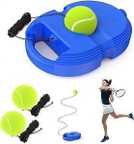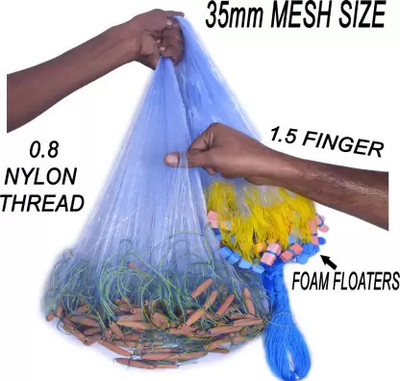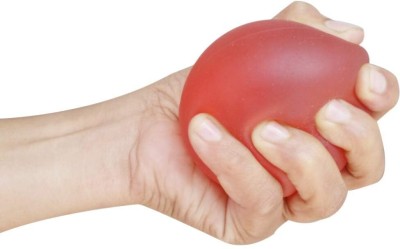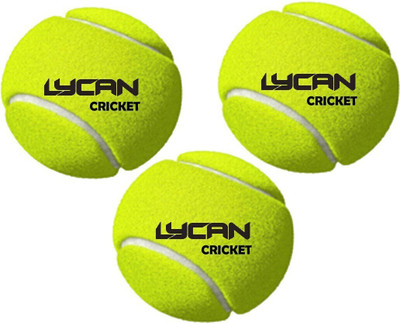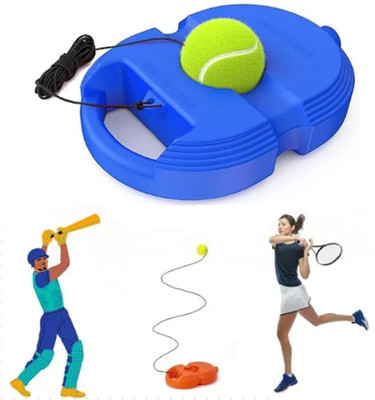
Get notified when this item comes back in stock.
JKCLUB Tennis Trainer Rebound Ball with String Solo Tennis Trainer Set Tennis Kit
Share
JKCLUB Tennis Trainer Rebound Ball with String Solo Tennis Trainer Set Tennis Kit
3.1
15 Ratings & 0 Reviews₹255
₹1,999
87% off
Warranty
0
Highlights
- Sport Type: Tennis
- Ideal For: Boys, Girls, Junior, Men, Senior, Women, Men
- Color: Multicolor
- Width: 10 cm, Height: 10 cm, Depth: 10 cm
Seller
Description
A tennis practice ball is specifically designed to help players improve their game through repeated use and durability. Here’s a detailed description:
**1. **Material:****
- **Core:** Most practice tennis balls have a rubber core, which offers a consistent bounce and durability. Some might have a lower bounce compared to regular match balls.
- **Felt:** Covered with a wool-nylon blend felt that is usually thicker and more rugged than that on standard match balls to withstand more impact and wear.
**2. **Color:****
- **Standard Color:** Usually bright yellow or neon green, making them easy to see and track during practice.
- **Alternative Colors:** Some practice balls come in a variety of colors, such as orange or red, to help with visibility and to cater to different training needs.
**3. **Bounce and Compression:****
- **Bounce:** Practice balls may have a lower bounce compared to regular match balls, which can help with learning to control shots and improve consistency.
- **Compression:** They often come in different compressions (e.g., standard, low, or high compression) to suit various training needs and player levels.
**4. **Durability:****
- **Enhanced Durability:** Designed to endure frequent hitting and rough play, so they last longer through extended practice sessions.
- **Wear Resistance:** The felt on practice balls is often more robust to resist wear and tear.
**5. **Performance Characteristics:****
- **Flight Stability:** Some practice balls are designed to have a more stable flight path to help players develop their strokes and understanding of ball trajectory.
- **Speed:** May be slower than match balls, allowing for more controlled practice and technique refinement.
**6. **Size and Weight:****
- **Standard Size:** Typically the same size as standard tennis balls, about 2.57 inches (6.54 cm) in diameter.
- **Weight:** Generally consistent with the standard weight of tennis balls, around 2.0 ounces (57 grams), but can vary slightly depending on the specific type and purpose.
**7. **Packaging:****
- **Containers:** Often sold in cans of 3 or 4 balls, which helps to keep them in good condition and preserves their bounce.
- **Bulk Options:** Also available in bulk packs for more extensive practice sessions or for use in tennis clubs.
**8. **Special Features:****
- **Pressureless Balls:** Some practice balls are pressureless, meaning they do not lose their bounce over time and remain consistent, making them ideal for practice.
- **Foam or Low Compression Balls:** For beginners or younger players, there are foam or low compression balls designed to be softer and slower, aiding in learning basic skills.
These features make tennis practice balls a crucial tool for players looking to hone their skills, improve their techniques, and enjoy more effective practice sessions.
Read More
Specifications
Important Note
|
In The Box
| Sales Package |
|
General
| Brand |
|
| Color |
|
| Model Name |
|
| Ideal For |
|
| Sport Type |
|
| Part Number |
|
| Exercise Type |
|
| Designed for |
|
| Number of Inner Compartments |
|
| Number of Outer Compartments |
|
| Closure Type |
|
| Material |
|
| Other Features |
|
| Key Features |
|
Dimensions
| Width |
|
| Height |
|
| Depth |
|
Ratings & Reviews
3.1
★
15 Ratings &
0 Reviews
- 5★
- 4★
- 3★
- 2★
- 1★
- 6
- 2
- 0
- 2
- 5
Have you used this product? Be the first to review!
Be the first to ask about this product
Safe and Secure Payments.Easy returns.100% Authentic products.
Back to top





